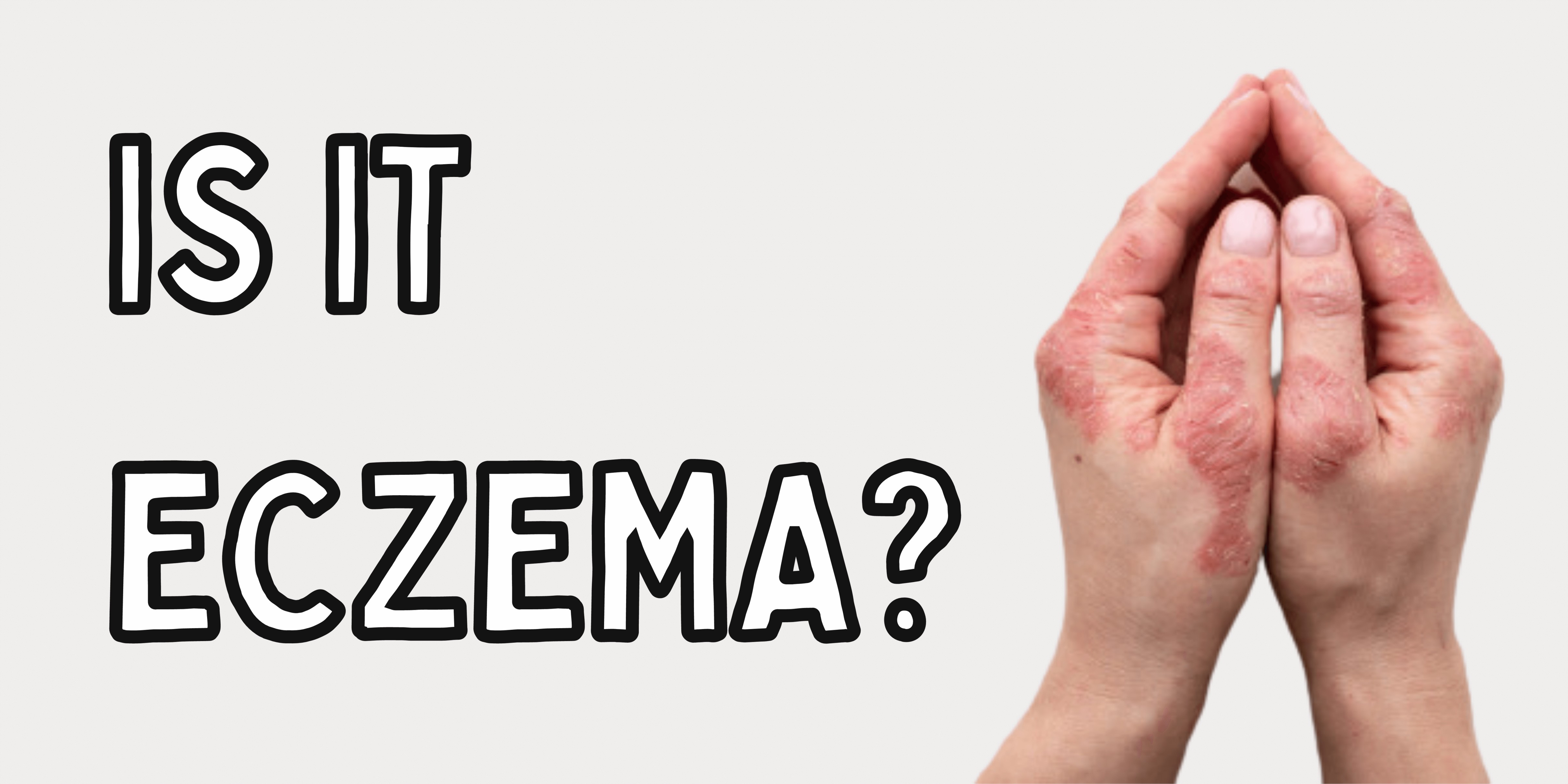Is It Eczema?

‘Doctor, is it eczema?’ This is a question that a lot of patients would like to know the answer.
What is eczema?
It is an umbrella term that just means inflamed skin. It could be further subcategorize into endogenous eczema or exogenous eczema.
Endogenous simply means it comes internally, could be controlled with proper skin care, but will not cure it.
Examples:
- atopic dermatitis (the most common, in which many tend to equate it with the umbrella term "eczema")
- seborrheic dermatitis (also very common, but tends to occur earlier than atopic dermatitis, and tends to resolve earlier)
Exogenous means it comes externally, in which there is a cause for it to happen. If you are able to recognize the cause, and avoid it completely, there is a chance that it will never recur again.
Examples:
- irritant contact dermatitis. In which there is a known irritant that cause the rash to appear. It typically had a well defined border. Example of it in babies include the "milk rash" and "diaper rash".
- allergic contact dermatitis. In which this typically presented with more generalized rash. The body will first need to be reacting to the agent (sensitization phase) during the first episode. When there is a similar agent present again for the second time, in adequate amount, it will trigger the immune response that have been established and manifest as a full blown eczema.
How do I known which type of eczema am I having?
Let's start off with the most common!
Atopic Eczema: “The Itch that Rash”
You are able to recognize this by asking yourself the few important key words below
- itch
- chronicity
- family history
- typical distribution
Itch is an important sign/ symptom that may suggest its an atopic eczema. Even if you doesn’t have much rash. Chronic! Long standing itch or rash may suggest eczema Family history is important!! A family member who have history of atopy – (i.e eczema, asthma, rhinosinusitis (resdung in Malay), chronic conjunctivitis (irritated eyes) – put your child at a higher chance of developing atopic eczema
onset: typically starts at age of 3 months. It wax and wane throughout.
Areas affected:
- face, especially bilaterally cheek is the earliest manifestation
- It may also affect the outer arms and outer limbs
The distribution tend to change with age. When they started to crawl, you will notice that more eczema over the elbows and knees area. When they becomes adolescent: it tends to become over the back of knee, back of elbow.
NOTE: it rarely affects the nose, nasolabial area, the arm pit and the diapers area. If it does think of other diagnosis.
Appearance:
It have many different faces! In early phase, it may looks angry red, wet and sometimes with yellowish crust. Later on it may start to dry, and started to have more scales on top when it lasted long enough, it would started to become a patch that have increase skin marking and scaliness on top.
Many got better as they grow up, but some may persist into adulthood. Does it comes again when it resolve?
The answer is unfortunately yes, in adulthood, it may appear again, sometimes as hand and feet eczema as this are the areas that are commonly expose to irritant.
Seborrheic Dermatitis: “Cradle Cap”
Onset: it typically starts earlier in life. Sometimes weeks, to perhaps first or second month of life
Areas affected: the scalp, head and neck are the commonest area affected. Occasionally it may affect the arm pit and groin area.
Course: With treatment, it usually resolve within 6-12 months.
Will it comes back? Perhaps yes. It might comes back as dandruff problem over the scalp, occasionally you will see some dry scaliness over the eye brow and beside your nose or jaw.
Contact Dermatitis: “The Diaper Rash” “Milk Rash”
Onset: it could occur at any point of time when an irritant is introduced (typically something more alkaline/ acidic/ drying) We tend to think when the skin is dry, we use water to moist it, but in fact it affects the skin in an opposite manner - it dries your skin further!!! Similarly, we like to use salt when there is any rash! We were told that it could CURE the rash! but again, it is a drying agent as it tends to pull water away from the body cells.
Area affected: any part of body that comes into contact to the irritant
Examples:
- Baby wipes: may give rise to rash over the diapers, rash over the mouth
- Urine and feces: give rise to your usual diaper rash
Course: with avoidance of the trigger, it usually doesn't recur!
Allergic contact dermatitis
This is a more difficult to diagnose disease and requiring patch testing to confirm, in which this test is difficult to be performed in the babies/ adolescent. A good history usually will suggest this - i.e “every time I put on this cream, his rash will flares up badly” “every time he get in touch with this thing, his rash will flares up badly”. Since it is difficult to confirm the diagnosis, why not try to avoid it?
The common allergic component are:
- Metals: Nickel. This are the materials that are used to make ear rings and necklace that are sold with cheap price
- Fragrance: Try not to use soaps/ moisturizers that have fragrance. There are a whole lot of it, but try recognizing things like balsam of Peru, fragrance, parfum.
- Preservatives: It is essential for the making of cream and lotions to improve the shelf life. common preservatives that may be of interest include: methylisothiazolinone, me-lisothizolinone (Kathon CG), paraben, formaldehyle, methydibromoglutarinile. So, learn to read the labels of your cream!!!
Lastly, is there a clear boundaries among these type of eczemas? Unfortunately the answer is “No!” You might have a baby that first comes in with seborrheic dermatitis like picture, which then evolve into atopic eczema. When multiple creams and regimes have been tried, they may at one point got irritated, or develop sensitization and finally develop a full blown allergic dermatitis. And this is why, the experts- your dermatologist are important to be around to help you to figure out which eczema that your kids are having and what are the best treatment modalities for them.
Article written by Dr. How (Dermatologist)
